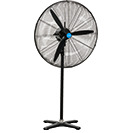Industrial Applications of Strapping Machines
Date Posted:6 May 2025
Discover how strapping machines improve packaging efficiency across key industries—from logistics to manufacturing, and many more.
Strapping machines play a vital role in many industrial settings, helping businesses secure goods efficiently for storage, transport, and distribution.
From manufacturing and logistics to agriculture and warehousing, these machines are essential for maintaining product integrity and improving workflow.
In this blog, we’ll explore the key industrial applications of strapping machines and the value they bring across a wide range of sectors.
If you're looking to improve your packaging process or introduce automation, understanding how these machines are used can help guide your decision. For a more detailed overview, check out our blog: What Is a Strapping Machine.
How Strapping Machines Are Used in the Workplace
Strapping machines play a crucial role in securing goods for shipping, storage, and handling.
In the workplace, they are used to bundle products together, reinforce packaging, and ensure safe transport of cartons, pallets, and irregular loads.
These machines are common in distribution centres, warehouses, and production lines where efficiency and consistency are key.
Industries use strapping machines to fasten loads with polypropylene, polyester, or steel straps, depending on the product weight and type.
Whether securing a few boxes or hundreds of pallets per day, strapping machines provide a time-saving and cost-effective solution for modern packaging challenges.
If you’re searching for an alternative solution, such as wrapping or cartoning, read more about what packaging equipment is and the different types.
Benefits of Using Strapping Machines
Strapping machines offer several advantages that streamline packaging operations and boost productivity.
-
Firstly, they improve load security, reducing the risk of product damage during transit. Consistent tensioning ensures that each package or pallet is tightly strapped and ready for handling.
-
Secondly, they enhance efficiency. By automating the strapping process, businesses can package goods faster and more accurately than manual methods, saving both time and labour costs.
-
Additionally, they help reduce packaging material waste by applying only the necessary amount of strapping.
-
Strapping machines also improve workplace safety by minimising manual handling and repetitive motion injuries. They’re highly versatile, accommodating a wide range of product sizes and shapes, and can be integrated into existing packaging lines for seamless operation.
Overall, strapping machines deliver professional packaging results that boost productivity and protect goods across all stages of distribution.
These are available as semi-automatic strapping machines and fully automatic strapping machines through our website.
See our full range of packaging machinery and equipment to support and complement your business operations.
Examples of Industries Using Strapping Machines
Logistics & Warehousing
In logistics and warehousing, strapping machines are essential for securing cartons, pallets, and bulk shipments.
They ensure products remain intact during loading, unloading, and long-distance transport, improving safety and reducing the risk of returns due to damage.
Manufacturing
Manufacturers use strapping machines to bundle both raw materials and finished products.
From metal parts to consumer goods, strapping helps maintain order in the production process, simplify storage, and ensure goods are ready for distribution with minimal handling effort.
Food & Beverage
The food and beverage industry benefits from strapping machines when bundling crates of bottled drinks, cartons of packaged food, or bulk ingredients.
Strapping prevents spills and ensures hygienic, tamper-proof delivery while complying with food safety standards.
Pharmaceuticals
In pharmaceutical production and distribution, strapping machines secure sensitive medical supplies, prescription drugs, and over-the-counter products.
This ensures compliance with regulatory standards and helps prevent contamination or damage in transit.
Construction & Building Materials
Strapping machines are used to bundle bricks, tiles, pipes, timber, and metal sheets.
These materials are heavy and often irregular in shape, requiring strong and durable strapping to maintain stability and protect against shifting during transport.
Retail & E-commerce
Retailers and online sellers use strapping machines as part of their conveyor systems to seal packages, reinforce cartons, and prepare bulk shipments.
It’s especially useful during peak seasons when shipping volume increases, and speed and security are vital to customer satisfaction.
Automotive
Automotive manufacturers and suppliers rely on strapping machines to secure vehicle parts, tires, batteries, and large mechanical components.
Strapping ensures that high-value, heavy items are stabilised during handling and logistics processes.
Agriculture
In agriculture, strapping is commonly used for bundling fertiliser bags, hay bales, seed packages, and fresh produce crates.
It helps farmers and suppliers transport goods safely from fields to market or storage.
Furniture & Home Goods
Furniture manufacturers and retailers use strapping machines to stabilise packaged items like sofas, tables, and beds.
This reduces the risk of shifting or tipping during shipment and ensures items arrive in good condition.
Medical Equipment
Medical suppliers use strapping machines to secure hospital and laboratory equipment, ensuring items are protected and grouped appropriately for delivery.
This is critical for time-sensitive or fragile shipments.
Recycling & Waste Management
In recycling facilities, strapping machines bundle compressed materials such as cardboard, plastic, and scrap metal.
This makes the handling and transport of recyclables more efficient and safer.
Let Verdex Help You Streamline Your Packaging Process
Strapping machines are a smart industrial workplace equipment investment for businesses looking to improve packaging efficiency, protect their products, and streamline operations.
With their wide-ranging applications across industries, they offer flexibility, speed, and consistency that manual strapping simply can't match.
Verdex offers a comprehensive range of manual, semi automatic, and fully automatic packaging machinery and equipment designed to meet the needs of businesses large and small.
Not only do we provide packaging equipment, but we specialise in a broad spectrum of material handling equipment for all types of businesses in Australia.
Our team is ready to help you find the right machine to suit your packaging line and product requirements.
Get in touch with Verdex today for expert advice, quotes, or a product demonstration. You can reach us through:
-
Submitting a contact form
-
Emailing sales@verdex.com.au with your specific requirements
Let us help you elevate your packaging operations with reliable, high-performance strapping solutions.
FAQs
What are the different types of strapping machines?
Strapping machines come in manual, semi automatic, and fully automatic models.
Manual tools are great for low-volume tasks, semi automatic machines suit medium-scale operations, and fully automatic systems are best for high-speed production lines and automated packaging.
What is the difference between a manual and automatic strapping machine?
Manual machines require full operator input for tensioning and sealing, while automatic machines handle the strapping process with minimal or no operator involvement.
Automatic machines are faster, more consistent, and ideal for high-volume applications.
What are the benefits of using a strapping machine?
Strapping machines improve packaging speed, enhance product security, reduce material waste, and minimise manual labour.They’re essential for businesses looking to streamline logistics and maintain professional packaging standards.
What maintenance is needed for strapping machines?
Routine maintenance includes cleaning strap guides, checking tension settings, inspecting sealing elements, and lubricating moving parts.
Regular servicing ensures reliable performance, reduces breakdowns, and extends the machine’s lifespan.
































































































































 Trolleys & Hand Trucks
Trolleys & Hand Trucks Cage Trolleys
Cage Trolleys Cleaning Carts & Trolleys
Cleaning Carts & Trolleys Construction Trolleys
Construction Trolleys Custom Trolleys
Custom Trolleys Hand Trucks & Dollies
Hand Trucks & Dollies Laundry/Linen Trolleys
Laundry/Linen Trolleys Lifting Trolleys
Lifting Trolleys Order Picking Trolleys
Order Picking Trolleys Panel Cart Trolleys
Panel Cart Trolleys Platform Trolleys
Platform Trolleys Powered Trolleys
Powered Trolleys Shelf & Tiered Trolleys
Shelf & Tiered Trolleys Shopping Trolleys
Shopping Trolleys Stainless Steel Trolleys
Stainless Steel Trolleys Tool Trolleys
Tool Trolleys Utility & Service Carts
Utility & Service Carts Lifting & Handling Equipment
Lifting & Handling Equipment Forklift Attachments
Forklift Attachments Jib Attachments
Jib Attachments Lifting Hoists & Pallet Hooks
Lifting Hoists & Pallet Hooks Load Skates & Tow Tugs
Load Skates & Tow Tugs Manual Stackers & Lifters
Manual Stackers & Lifters Pallet Jacks
Pallet Jacks Pallet Lifters
Pallet Lifters Pallet Rotators & Dispenser
Pallet Rotators & Dispenser Powered Pallet Trucks & Electric Lifters
Powered Pallet Trucks & Electric Lifters Scissor Lift Trolleys and Tables
Scissor Lift Trolleys and Tables Conveyor Equipment
Conveyor Equipment Conveyor Frames & Stands
Conveyor Frames & Stands Roller & Skate Conveyors
Roller & Skate Conveyors Ladders & Access Equipment
Ladders & Access Equipment Container & Yard Ramps
Container & Yard Ramps Ladders & Step Stools
Ladders & Step Stools Work Platforms & Crane Cages
Work Platforms & Crane Cages Drum Handling Equipment
Drum Handling Equipment Drum Storage & Bunding
Drum Storage & Bunding Drum Trolleys & Lifters
Drum Trolleys & Lifters Forklift Drum Handling
Forklift Drum Handling Waste Handling & Bins
Waste Handling & Bins Bin Lifters & Tippers
Bin Lifters & Tippers Plastic Waste & Wheelie Bins
Plastic Waste & Wheelie Bins Steel Waste & Tipping Bins
Steel Waste & Tipping Bins Waste Carts
Waste Carts Dangerous Goods Storage & Spillage
Dangerous Goods Storage & Spillage Aerosol Cans Storage Cages
Aerosol Cans Storage Cages Bunded Pallets & Storage
Bunded Pallets & Storage Corrosive Goods Storage Cabinets
Corrosive Goods Storage Cabinets DG Storage & Trolleys
DG Storage & Trolleys Flammable Liquid Cabinets
Flammable Liquid Cabinets Forklift Gas Storage Cages
Forklift Gas Storage Cages Site Storage
Site Storage Spill Kits
Spill Kits Shelving & Storage Equipment
Shelving & Storage Equipment Stillage & Transport Cages
Stillage & Transport Cages 750 Series Cage Configurations
750 Series Cage Configurations Heavy Duty Cabinets
Heavy Duty Cabinets Heavy Duty Shelving
Heavy Duty Shelving Mega Bins & Pallets
Mega Bins & Pallets Packing & Workbenches
Packing & Workbenches Parts Trays & Stor-Pak Bins
Parts Trays & Stor-Pak Bins Pegboard & Louvre Panels
Pegboard & Louvre Panels Plastic Bins & Crates
Plastic Bins & Crates Plastic Handling Solutions Bins
Plastic Handling Solutions Bins Plastic Pallets
Plastic Pallets Stack & Nest Bins
Stack & Nest Bins Pallet Racking Accessories
Pallet Racking Accessories Workplace Equipment
Workplace Equipment Modular Workbenches
Modular Workbenches Electric Height-Adjustable Workbenches
Electric Height-Adjustable Workbenches Floor Matting
Floor Matting General Workplace Equipment
General Workplace Equipment Industrial Weighing Scales
Industrial Weighing Scales Packaging Machinery
Packaging Machinery Stationery Cupboards
Stationery Cupboards Storage and Stillage Cages
Storage and Stillage Cages Tool Trolleys
Tool Trolleys Tooling Cabinets
Tooling Cabinets Workshop Fans and Coolers
Workshop Fans and Coolers Safety Barriers, PPE & Signage
Safety Barriers, PPE & Signage Barriers & Bollards
Barriers & Bollards First Aid Equipment
First Aid Equipment Gloves, Knives and PPE
Gloves, Knives and PPE Signage
Signage Cleaning & Site Supplies
Cleaning & Site Supplies Cleaning Equipment
Cleaning Equipment Cleaning Trolleys
Cleaning Trolleys Rubbish Bins
Rubbish Bins Signs & Traffic Supplies
Signs & Traffic Supplies Construction Equipment
Construction Equipment Construction Trolleys
Construction Trolleys Waste Handling
Waste Handling General Site Equipment
General Site Equipment Concrete Equipment
Concrete Equipment Site Storage
Site Storage Lifting Equipment
Lifting Equipment Verdex Specials
Verdex Specials
.jpg)
.jpg)









